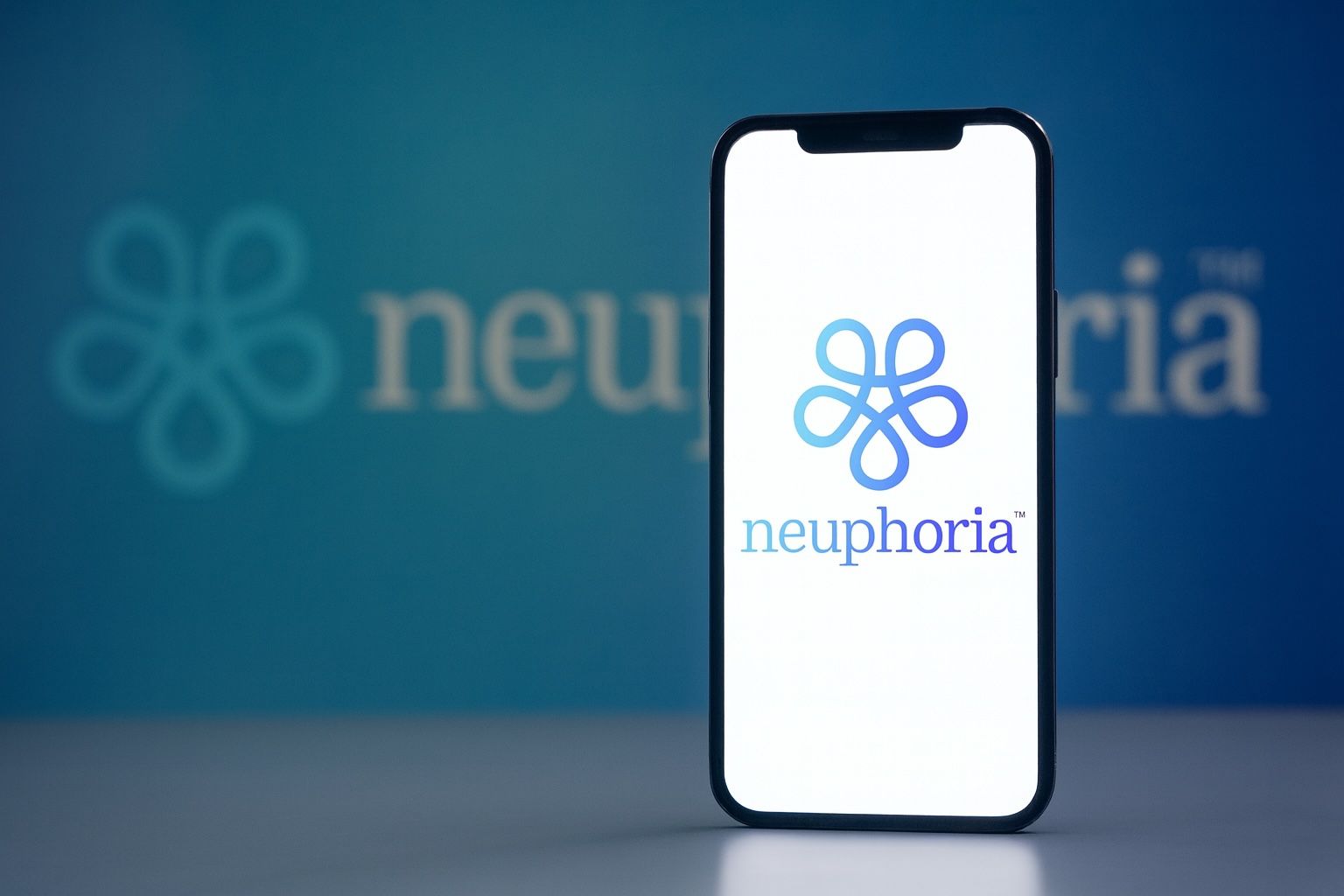Key Facts: – Neuphoria (Nasdaq: NEUP) shares plunged ~67% in after-hours trading on Oct 20 when its lead drug BNC210 failed a Phase 3 SAD trial [1]. The AFFIRM-1 trial missed both primary and secondary endpoints, and the company immediately halted its social anxiety program and launched a full strategic review [2] [3]. – CEO Spyros Papapetropoulos vowed to “conserve our cash position” while exploring options to “maximize value for shareholders” [4]. Neuphoria will evaluate BNC210 in PTSD (where earlier data were promising) and otherwise cut spending. – NEUP stock fell from about $15.40 on Oct 20 to roughly $5 in pre-market Oct 21 [5] [6]. By Oct 23 close it was ~$4.05 [7], then rebounded to ~$6.7 by Oct 24 (up ~65% intraday) [8] [9]. – The company held $14.2M cash at June 30, 2025, projecting runway into mid‑2027 [10]. It also maintains a Merck partnership (Alzheimer’s candidates) worth up to $450M in milestones [11]. – Analysts had been bullish (consensus “Hold”/Buy, average target ~$28 [12]), but many now question the SAD trial design. William Blair noted BNC210’s peak concentration arrives 2 hours after dosing, whereas the speech test came at 1 hour, possibly explaining the miss [13].
Neuphoria’s blowout Phase 3 failure rocked investors this week. After market close on Oct. 20, the company announced that its AFFIRM-1 trial of BNC210 (also known as soclenicant) for social anxiety disorder “did not meet its primary endpoint” (Subjective Units of Distress Scale) and secondary measures [14]. In response, Neuphoria dropped the SAD program and began a full portfolio review [15]. “We plan to immediately take action to conserve our cash position… with the goal of maximizing value for shareholders,” CEO Spyros Papapetropoulos said in the Oct. 20 press release [16]. Instead of continuing SAD development, the company will explore BNC210 in PTSD (where Phase 2 data were encouraging [17]) and likely invest minimally in other programs.
This news sent NEUP shares into a tailspin. On Monday Oct. 20 the stock traded around $15 before the announcement; by after-hours it had plummeted ~67% to the $5 range [18]. On Tuesday Oct. 21 pre-market it was about $5.35 [19]. By the close of Oct. 23, NEUP was near $4.05 [20] (Friday’s pre-market trading showed a strong rebound to ~$6.80 by 9:36 AM EDT [21]). This extreme volatility reflects the abrupt shift in outlook: TipRanks noted the stock had rallied over 300% YTD before this news [22], and now faces deep losses. Volume has spiked (Reuters reports ~27.6M shares traded on Oct. 23, compared to a three-month average of ~2.7M [23]), indicating heavy investor turnover.
Technical Analysis: NEUP’s chart is now highly oversold. After hitting a 52-week high (~$126) on last year’s speculative interest, the stock had already fallen sharply before rallying into October. The recent collapse breaks major support near $10 and $5 levels. On Oct. 23 NEUP closed at about $4.05 [24]; momentum indicators (not cited here) suggest a deep oversold condition. The intraday bounce to ~$6.7 on Oct. 24 (see stockanalysis data [25]) shows a short-term relief rally, but sustained upside will likely need new positive catalysts. Technically, key resistance may sit near $7–8 (where the stock halted its rebound on Oct. 24), with support near the recent lows ($3–$4) if selling continues. Given the huge sell-off, some traders might see oversold bounce opportunities, but caution is high given fundamental uncertainties.
Fundamental Analysis: Neuphoria is a tiny biotech (market cap <$40M [26]) with no approved drugs. Its value lay in BNC210 (α7 nicotinic modulator) and pipeline prospects. The AFFIRM-1 Phase 3 miss is a material setback. The trial design is under scrutiny: William Blair analysts pointed out a potential flaw – BNC210’s peak blood level comes at 2 hours (at 300 mg dose), but the public-speaking anxiety test was given just 1 hour after dosing [27]. This mismatch “may be related to trial design and endpoint sensitivity,” notes one biotech specialist [28], suggesting BNC210 might need more time to work. Still, efficacy is the gating factor; without meeting endpoints, the SAD indication is essentially abandoned.
Financially, Neuphoria reported roughly $14.2 million cash at June 30, 2025 [29]. With burn rates likely ~$8–9M/year (R&D about $9M last year), that cash was expected to fund operations into 2027. The company emphasizes this “sufficient runway” even after cutting the SAD R&D [30]. Neuphoria also has no debt and a healthy current ratio (Investing.com notes cash > debt, current ratio ~3.6 [31]). On the other hand, quarterly operating expenses may actually fall now that the SAD program is halted. Fundamentally, NEUP still has one partnered asset: Merck’s MK-1167 for Alzheimer’s (Phase 2, Merck-funded). Through the Merck deal, Neuphoria could earn up to $450M in milestones plus royalties [32]. This partnership is the main remaining upside, but it is years from payoff. In short, Neuphoria is cash-strapped and must conserve funds (as management emphasized [33]). Analysts will likely slash revenue estimates and targets for NEUP given this news.
Sector Context and Peers: In the broader biotech space, clinical-stage companies often see wild swings when trials fail. A double-digit decline or worse is typical for a drug candidate flop. For perspective, other neuropsychiatric developers have faced similar fates: for example, VistaGen Pharmaceuticals (another social anxiety biotech) saw stock swings on its pivotal trial data. Within the neuroscience sector, R&D failures are common. Neuphoria’s market reaction – a ~67% plunge – is not unprecedented given the circumstances.
That said, many investors now compare BNC210 to VistaGen’s fasedienol (under trial for SAD): William Blair noted fasedienol uses a nasal delivery and targets amygdala pathways, potentially giving it an edge over oral BNC210 [34]. Biotech analysts see BNC210’s prospects now mostly in PTSD or other anxiety niches. Indeed, Neuphoria has previously reported positive Phase 2b PTSD results (significant symptom reduction by 12 weeks [35]). Those data (published in NEJM Evidence) may keep some hope alive. Absent a clear near-term catalyst, however, NEUP’s valuation will hinge on rare biotech events: either a surprise success in another trial or an acquisition/partnership.
Stock Forecast and Outlook: Prior to the crash, the consensus 12-month price target was around $28 (implying huge upside) [36]. In reality, those targets were set when BNC210’s Phase 3 was expected to succeed. Now analysts will adjust forecasts sharply lower. Any short-term recovery likely depends on market oversold relief or buyout chatter. Some stock scanners (e.g. InvestingPro) still argue NEUP is undervalued “despite strong market performance” [37], but that stance assumes future upside from Merck milestones or PTSD success – big assumptions given today’s news.
Technically, NEUP looks extremely oversold; a dead cat bounce could emerge (as seen Oct 24). But sentiment is negative. In the short term, traders may watch for a dead-cat bounce toward $7–8 resistance. Longer-term, with $14M cash, the company can survive but must deliver new news to reignite buying. If Neuphoria completes its strategic review and possibly pivots assets (e.g. seeking acquirers or partners), that could provide a catalyst. But without new positive data, analysts and investors are likely to remain cautious.
Bottom Line: Neuphoria’s stock is a high-risk rebound play. The Phase 3 failure wipes out its lead indication and leaves only speculative value in PTSD, Merck milestones, or future deals. Investors will watch management’s strategic review closely (update promised by year-end [38]). Until then, expect NEUP to trade primarily on headlines. As one biotech analyst noted, the efficacy miss “reduces the probability of approval and near-term monetization” for BNC210 [39]. For now, buyers should be wary of potential further declines; some traders may wait for technical support near $3–$4 or clearer news before re-entering.
Sources: Official press releases and SEC filings [40] [41]; financial news reports [42] [43]; analyst commentary [44]; market data [45] [46]. Each source is cited above.
References
1. www.investing.com, 2. www.investing.com, 3. www.globenewswire.com, 4. www.globenewswire.com, 5. www.investing.com, 6. www.benzinga.com, 7. www.reuters.com, 8. www.reuters.com, 9. www.benzinga.com, 10. www.globenewswire.com, 11. www.globenewswire.com, 12. www.marketbeat.com, 13. www.biospace.com, 14. www.globenewswire.com, 15. www.globenewswire.com, 16. www.globenewswire.com, 17. www.biospace.com, 18. www.investing.com, 19. www.benzinga.com, 20. www.reuters.com, 21. stockanalysis.com, 22. www.tipranks.com, 23. www.reuters.com, 24. www.reuters.com, 25. stockanalysis.com, 26. uk.investing.com, 27. www.biospace.com, 28. uk.investing.com, 29. www.globenewswire.com, 30. www.globenewswire.com, 31. uk.investing.com, 32. www.globenewswire.com, 33. www.globenewswire.com, 34. www.biospace.com, 35. www.biospace.com, 36. www.marketbeat.com, 37. uk.investing.com, 38. www.globenewswire.com, 39. www.stocktitan.net, 40. www.globenewswire.com, 41. www.globenewswire.com, 42. www.investing.com, 43. uk.investing.com, 44. www.biospace.com, 45. www.reuters.com, 46. www.marketbeat.com







